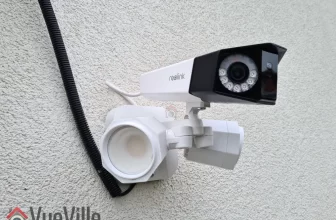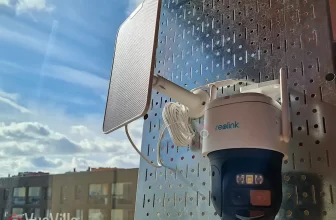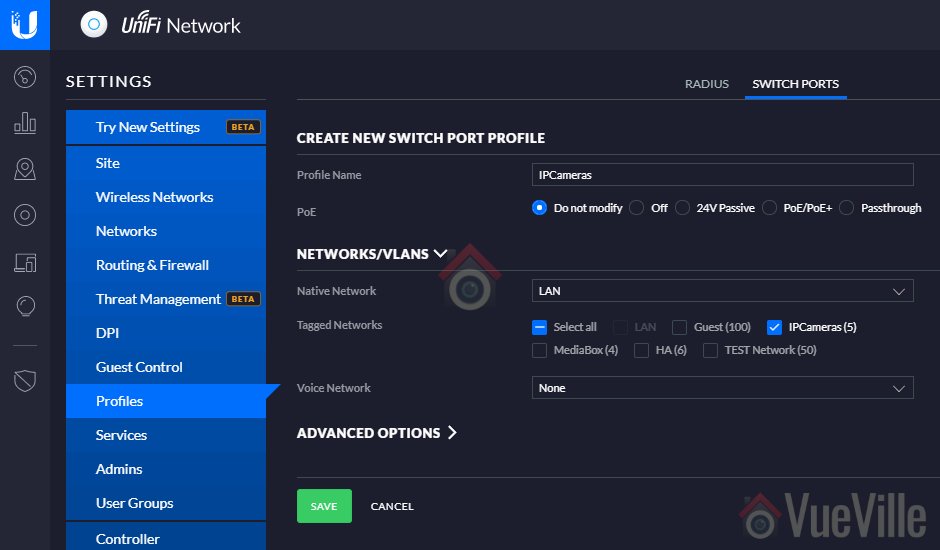If you are just stepping into the world of home security cameras, the first brands you will come across are probably Lorex and Swann.
These two brands are commonly found in big box stores across the country and sport attractive price tags compared to the likes of Hikvision and Dahua IP cameras. They also have a strong online presence.
So should you spend your had earned cash on one of these budget brands? What, if anything, are you sacrificing for that super budget-friendly price? Let’s find out.

Lorex vs. Swann – the Stories behind the Brands
Lorex (now owned by Dahua)
Lorex was founded in 1993 and has head offices in Markham, Ontario, Canada and in Linthicum, Maryland, USA. They have product warehouses in Markham, Indiana and California.
But first let’s start with the company FLIR, better known as the high-end camera manufacturer who revolutionized thermal imaging for the military and industrial markets. They acquired Lorex in 2012 for around $60 million seeking to lower the cost of thermal imaging and open it up to the retail market.
So for the next 6 years they tried to penetrate the DIY and SMB markets. During this period, their main OEM supplier was Dahua. In February 2018, however, FLIR exited the DIY security camera space by selling Lorex to Dahua. They currently operate as a subsidiary of Dahua. So think of Lorex as a Dahua brand.
Swann
Swann was created by David Swann way back in 1987 in his family garage in Australia. David grew the business to its international presence across 40 countries. In 2014, Swann was bought by the American surveillance equipment manufacturer Infinova Group which is headquartered in Monmouth Junction, New Jersey, USA. The $87.5 million deal saw Swann gaining access to the high-end industrial sector. Most Swann cameras are rebranded Hikvisions.
8MP 4K IP Camera Duel – Lorex LNB8111BW vs. Swann NHD-885MSFB
I usually compare the 4MP versions of various brands because really 4MP is well above what most people will need in resolution. However the only common megapixel resolution between both brands is 2MP (1080p), 3MP and 8MP (4K). 2MP and 3MP are just too low, so I have opted to compare the most popular 8MP models from Lorex (LNB8111BW) and Swann (NHD-885MSFB). These are also 4K cameras as well.
Here’s a summary in a nice and easy table:
| Feature | Lorex LNB8111BW | Swann NHD-885MSFB |
|---|---|---|
| Standalone operation | No, requires NVR, has ONVIF support | No, requires NVR, no ONVIF support |
| Lens Type | Fixed type | |
| Lens | 4mm @ F1.6, Angle of view (horizontal): 88° | Angle of view (horizontal): 93° |
| Sensor | 1/2.5" 8 Megapixel Progressive Scan CMOS | 8 Megapixel Progressive Scan CMOS |
| WDR | HDR | No |
| Night Vision | Colour night vision, IR cut filter with auto switch | Black & white night vision, IR cut filter with auto switch |
| IR Range | 90ft (27m) | 115ft (45m) |
| Minimum illumination | 0.5 lux without IR, 0.3 lux with IR | Unknown |
| PIR Sensor | No | Yes |
| Floodlights | No | Yes |
| Longest dimension | 180mm | 152mm |
| Operating temperature | -22°F to 140°F (-30°C to 60°C) | -22°F to 131°F (-30°C to 55°C) |
| Metallic housing | Yes | |
| Ingress Protection | IP66 | |
| DC 12V power | Yes | No |
| Power usage | Max. 330mA / 4W | Unknown |
| Audio in/out | No | Microphone, Speaker (2-way) |
| SD Card | No | |
| PoE | Yes, 802.3af | |
| Wi-Fi | No | |
| Alarm in/out | No | |
| ONVIF | Yes | No |
| RTSP | Yes | Yes |
| Encoding | H.265/H.264/MJPEG | Unknown |
| Max Resolution | 3840×2160 (8MP/4K) @ 15fps | 3840×2160 (8MP/4K) |
| Max bitrate | Unknown | Unknown |
| Simultaneous streams | Unknown | Unknown |
| Built-in NVR | No | Yes |
| 3D Noise Reduction | Yes | |
| Network storage | No | |
| Simple motion detection | Yes but requires NVR | |
| Email alerts | Yes but requires NVR | |
| Push alerts | Yes but requires NVR | |
| Line crossing detection | No | Yes but requires NVR |
| Intrusion detection | No | Yes but requires NVR |
| Audio Detection | No | Yes but requires NVR |
| Abandoned/Missing object detection | No | Yes but requires NVR |
| Scene change detection | No | Yes but requires NVR |
| Face detection | No | Yes but requires NVR |
| Where to buy | ||
The Biggest Difference between Lorex and Swann IP Cameras
Just like the lower resolution Lorex models, the high resolution 8K Lorex cameras do not have onboar storage – so they are not capable of standalone operation. You have to connect it to another device to record the video footage.
But all Lorex cameras now support ONVIF, so you can use them with any ONVIF-compatible NVR. Not just Lorex NVRs, but any NVR that supports ONVIF or even to a DIY NAS NVR system.
Just like the Lorex, Swann cameras do not have onbaord storage either. So they are also incapable of standalone operation. Moreover, Swann has decided not to enable ONVIF on their cameras. So you are forced to use a Swann NVR if you want to buy their IP cameras. This is the main reason that we at VueVille do not recommend Swann for DIY security camera enthusiasts. Swann’s ideology is 100% against the ethos of openness and inter-operability that I champion here at VueVille.
EDIT: It may be possible to crack/hack the Swann cameras to make it work as a standalone camera, either to access just the RTSP stream or add it to your non-Swann NVR using the ONVIF standard. This is not supported by Swann and may not work for you. We do not recommend tampering with your cameras in any case, as this may void any warranty!
Hardware features
The Lorex has a large CMOS sensor, a 1/2.5″ progressive scan CMOS sensor. The closest we have seen is Reolink which has a slightly smaller 1/2.7″ sensor. Swann doesn’t provide any specifications for its image sensor.
The size of the sensor has a huge bearing on the low light ability of a camera. The larger the sensor, the greater its ability to gather light and so do well in low light conditions. But as you cram in more and more pixels into the same size sensor, they get smaller and smaller, which adds noise. Noise is the bane of low light video and reduces the detail that you can get out of your video. So while security camera manufacturers have pushed pixel count from 3MP to 4MP and beyond, they have not really increased the sensor size.
Next up is WDR or Wide Dynamic Range. This is a feature that enhances the level of detail an IP camera can pick out in shadows. Unfortunately neither IP camera supports it. Not entirely surprising given the budget nature of the cameras though. However, Lorex claims High Dynamic Range (HDR) support. While I doubt it’s close to the real thing, it is better than nothing which is what Swann comes up with on this front.
Next up is low light performance. While most cameras are good in daylight, decent night-time performance is tricky to achieve.
The Lorex sports colour night vision – this is a very interesting feature and does set the Lorex brand apart. However be aware that the camera will switch back to black & white IR night vision below 1 lux to ‘ensure optimal low-light image quality’ as Lorex puts it.
The Swann cameras have only standard black and white Infrared night vision. However, the floodlights on the Swann are bright enough to switch the day/night sensor to day mode and provide colour vision. Just don’t count on being able to capture much detail this way though.
So far we see the Swann lagging behind a bit. But watch out – Swann has a few nifty features that Lorex doesn’t: a PIR sensor, on-board floodlight LEDs, an on-board microphone and built-in speaker! Swann uses the heat-sensing PIR sensor to power its TrueDetect feature which can reduce false alerts. A good touch and a rare one too!
Software features
The three software features that make a great IP camera are ONVIF/RTSP support, built-in NVR feature, and the advanced motion detection features that help reduce false alerts.
Here, the main differences between the Lorex and the Swann are that:
- Lorex supports ONVIF, Swann doesn’t.
- Swann has advanced motion detection methods such as line crossing, intrusion detection, person detection and even face detection.
Both Lorex and Swann do not support standalone operation. This is because neither camera can expose a public IP address that you can use to connect to the camera and pull an RTSP stream.
RTSP allows even non-ONVIF equipment (such as software) to access the security camera’s video stream. Examples are video players like the popular VLC player, and BLue Iris PC NVR software.
Neither IP camera has the much coveted built-in NVR feature, and neither have on-board storage.
Its worth noting that Lorex supports H.265 encoding to keep file sizes under control.
Motion Detection ability
While Lorex supports basic motion detection only, Swann supports full video analytics. I can’t emphasize enough the importance of these advanced motion detection methods in reducing false motion alerts.
Neither camera can send out motion detected alerts or emails by themselves – remember, no standalone operation. This is something that Hikvision, Dahua, Reolink and Amcrest can all do.
Warranty
Lorex has a 2 year warranty as standard, but can be extended to 3 years or 5 years for an extra fee.
Swann has only a 1 year warranty as standard, but can be extended online by 6 months to cover mechanical failure for free.
Verdict
I have a strong dislike for IP cameras that are crippled on purpose to work only with the manufacturer’s own NVRs. So Swann even with its swanky features loses out big time due to its lack of ONVIF support and ZERO inter-operability with other brands.
So Lorex is the clear choice here. You can add it to any NVR that supports ONVIF. It has all the basic hardware features that you would expect and has colour night vision and HDR to boot.
For IP cameras that are not designed to lock you into a particular brand, check out the other recommendations on our best outdoor IP cameras list.
Where to buy
A quick note: This article may contain affiliate links. If you click on one of these links and then purchase something, we may receive a fee. This does not cost you anything extra. Also note that Hikvision and Dahua do not consider certain platforms including Amazon as an authorized seller platform. So if you need warranty support please purchase from authorized resellers of Hikvision and Dahua products in your country.





